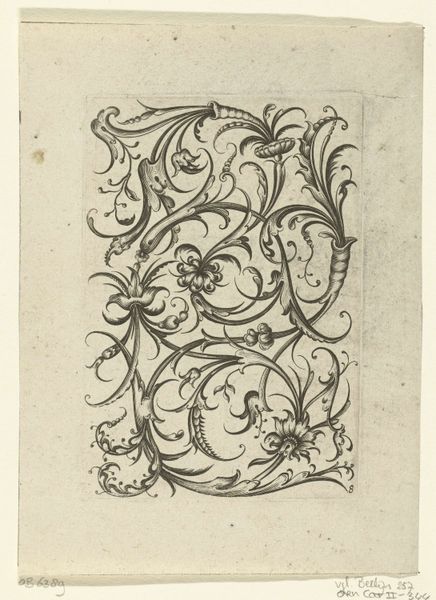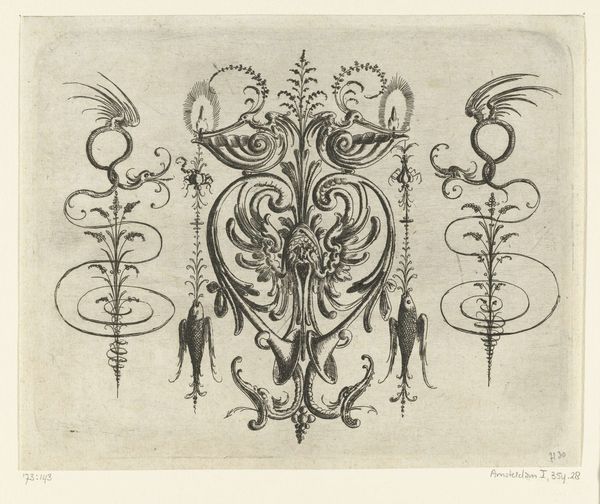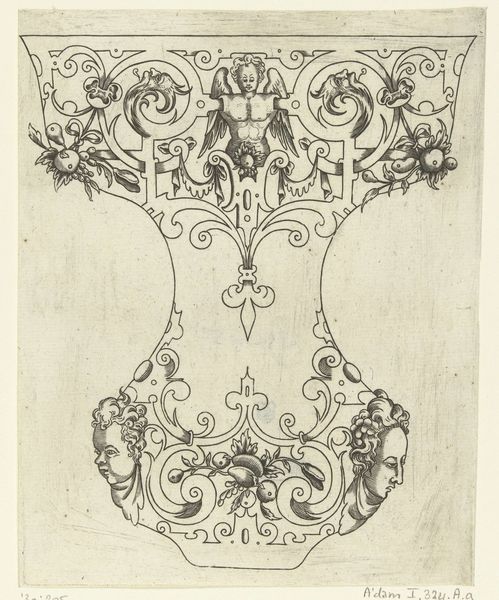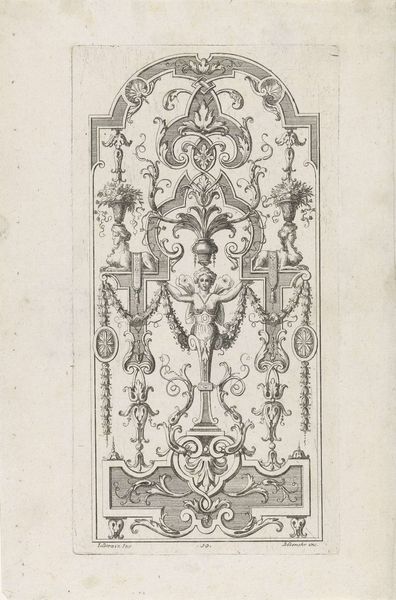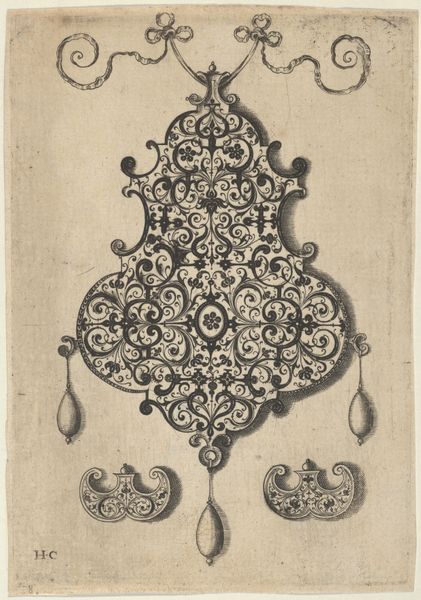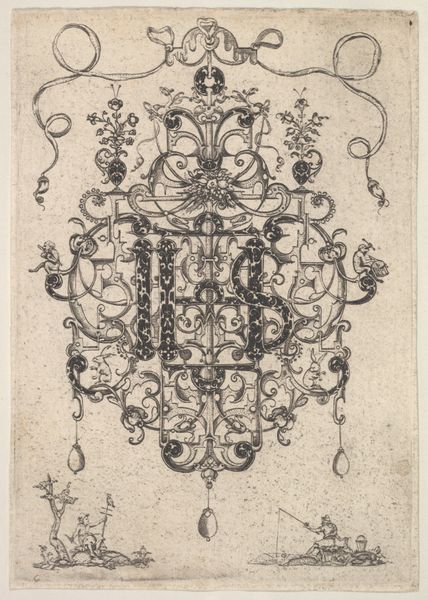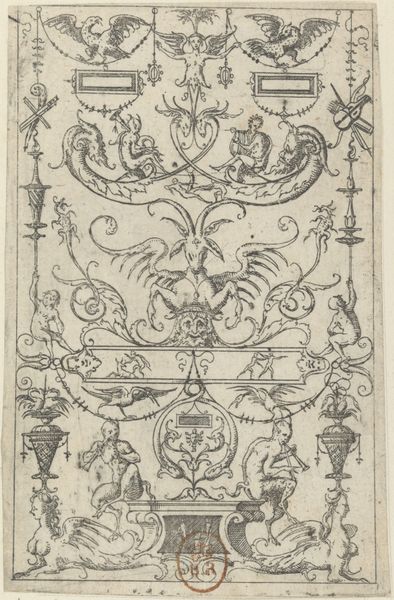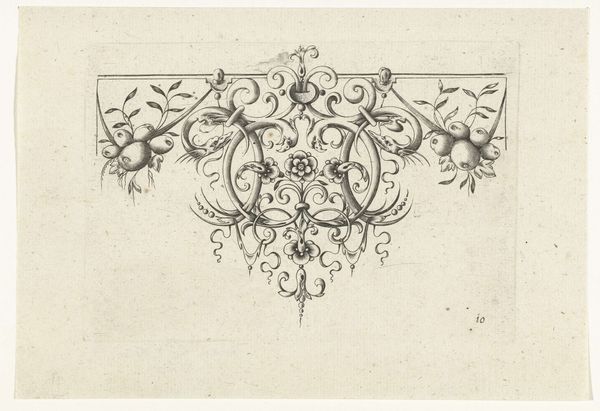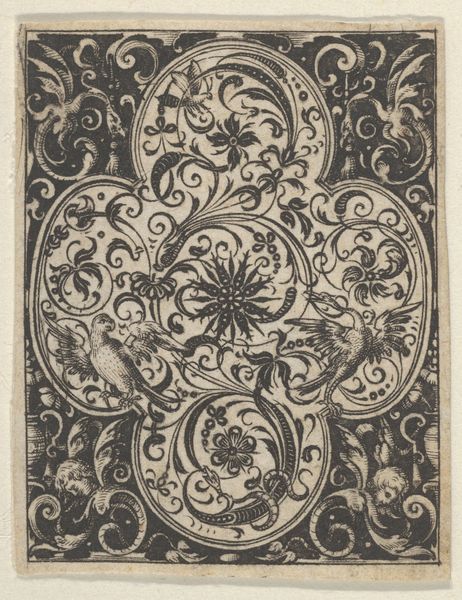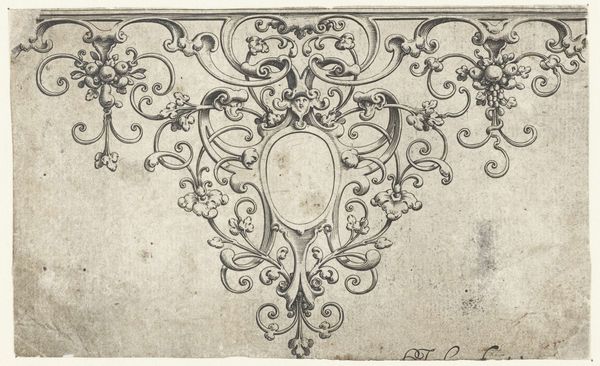
drawing, ink, engraving
#
drawing
#
baroque
#
form
#
ink
#
line
#
decorative-art
#
engraving
Dimensions: height 167 mm, width 117 mm
Copyright: Rijks Museum: Open Domain
Gabriel Ladame created this ornamental design for a keyhole plate sometime in the mid-17th century. During this period, the Dutch Republic was experiencing a Golden Age, marked by prosperity and cultural flourishing that extended to the decorative arts. The design encapsulates the era's aesthetic sensibilities. Notice the symmetrical composition and the intricate vegetal motifs, which were classic elements of baroque ornamentation. Yet, these embellishments around a keyhole also hint at deeper social narratives. In a time of increasing wealth, even functional objects like keyholes were adorned to reflect status. Consider too, the implications of locks and keys during this era. Who had access, and who was excluded? These designs subtly underscore the themes of privilege, privacy, and the control of access that were deeply embedded in the social structures of the time. Here, Ladame’s craft reflects the societal values and power dynamics of the Dutch Golden Age.
Comments
No comments
Be the first to comment and join the conversation on the ultimate creative platform.

